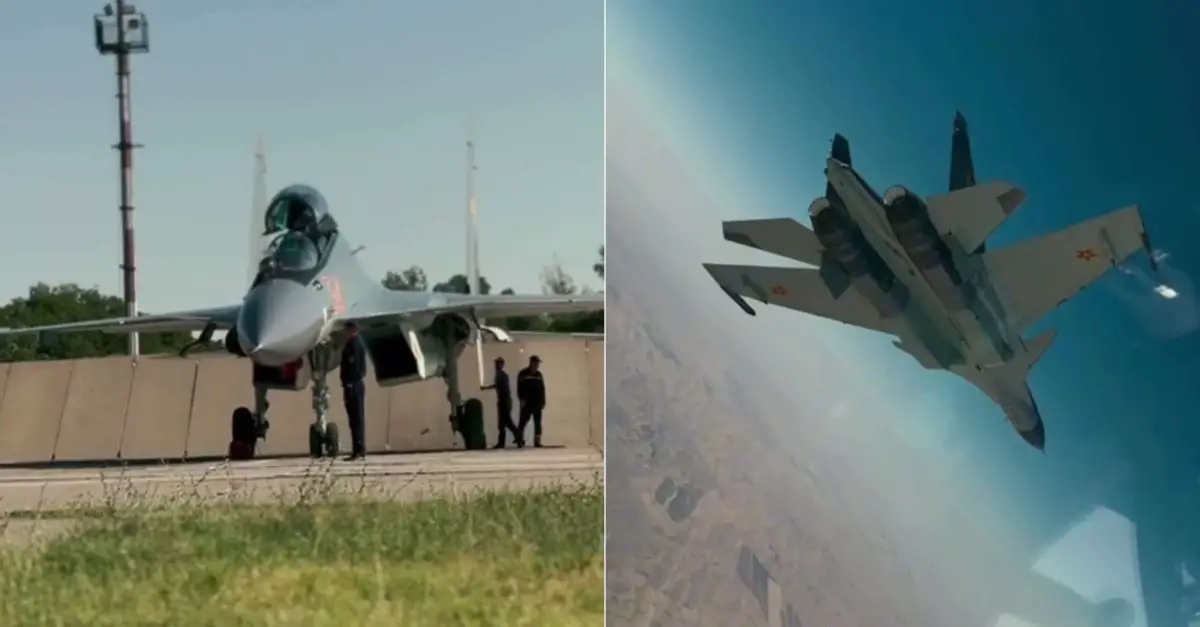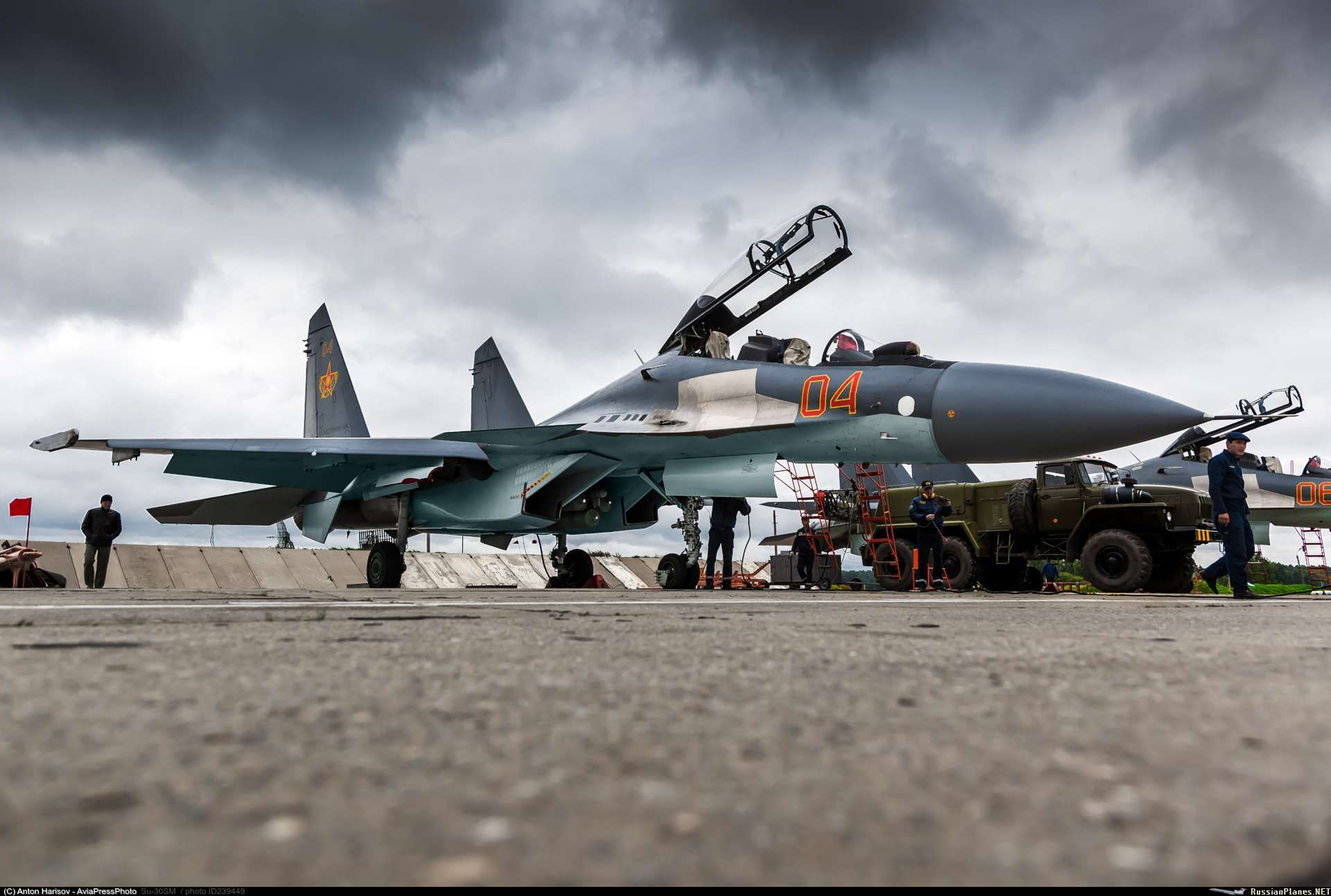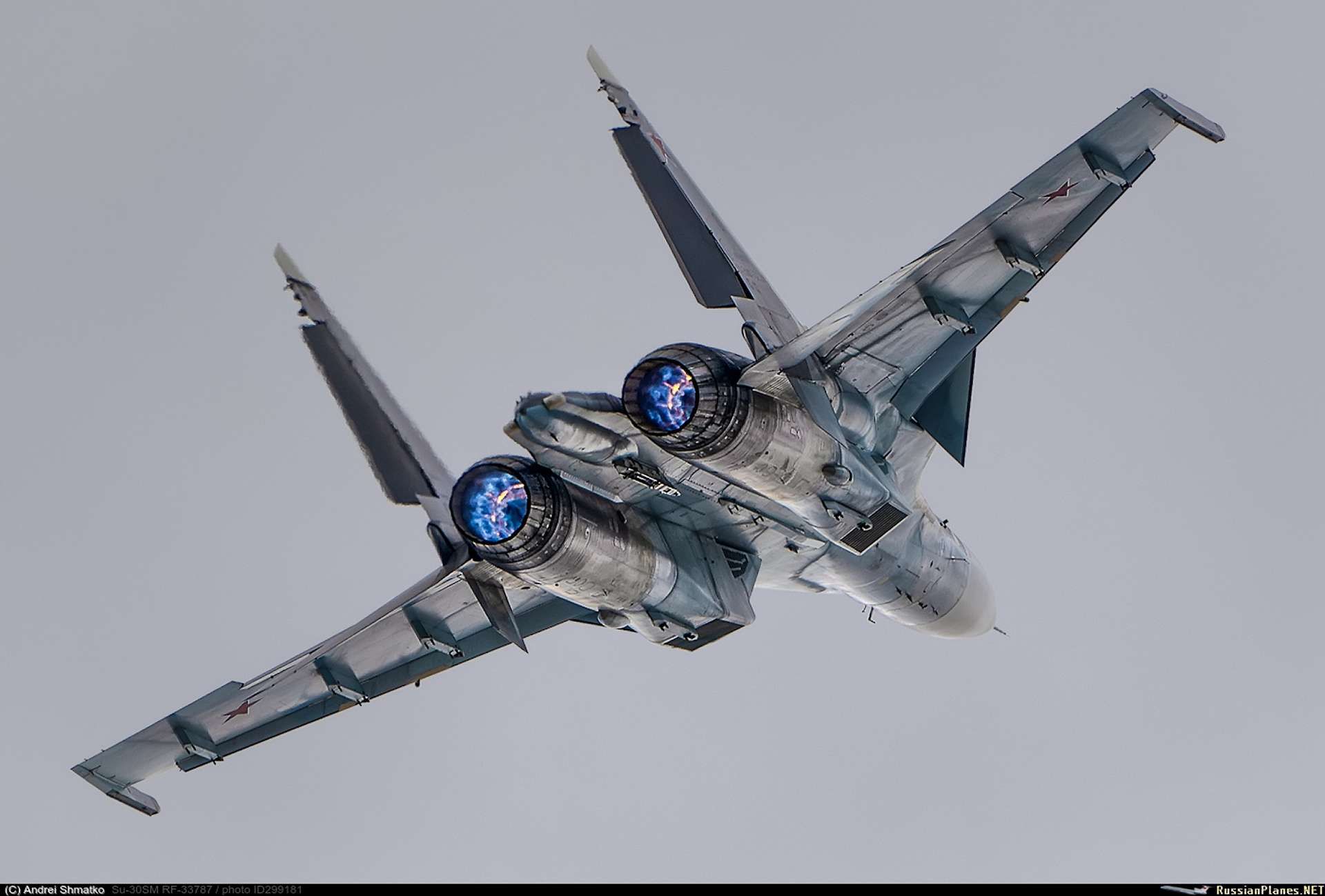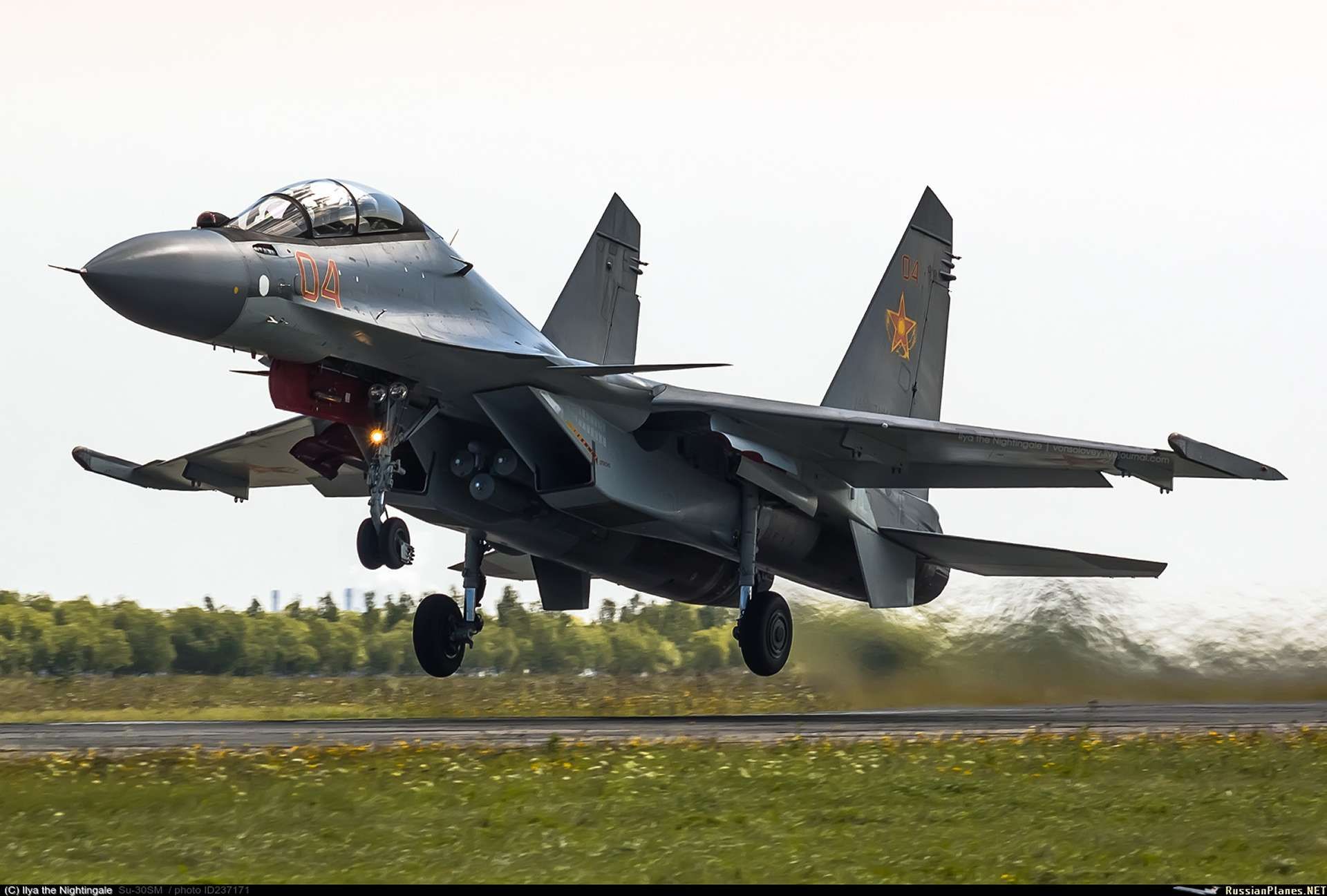Breaking News
Kazakhstan receives six new Su-30SM multirole fighters from Russia.
As reported by Scramble on August 19, 2024, Kazakhstan's Air Defense Forces recently received six Su-30SM multirole fighters from Russia. These jets, identified by tail numbers "51" to "56" in red, were allocated to the 602nd Air Base in Shymkent. This delivery continues a series of acquisitions that have progressively increased Kazakhstan's fleet of Su-30SMs, now totaling 30 aircraft. The new jets will operate alongside Su-25 aircraft already stationed at the base, replacing the MiG-29s, which were decommissioned and sold for scrap in November 2023.
Follow Army Recognition on Google News at this link

These jets, identified by tail numbers "51" to "56" in red, were assigned to the 602nd Air Base in Shymkent, bringing Kazakhstan's fleet of Su-30SMs to a total of 30 aircraft. (Picture source: Kazakh MoD)
The Su-30SMs were produced at the Irkutsk Aviation Plant, part of Russia's United Aircraft Corporation, as part of an ongoing military procurement relationship between Kazakhstan and Russia. This relationship began with a 2014 contract that led to the first batch of Su-30SMs being delivered to Kazakhstan in 2015. The initial contract, valued at approximately 5 billion rubles ($54,333,550), resulted in the deployment of four Su-30SMs to the 604th Aviation Base in Taldy-Kurgan. Subsequent contracts have continued to build upon this initial acquisition.
In December 2015, Kazakhstan signed a second contract for eight additional Su-30SMs. The deliveries were staggered, with the first two aircraft arriving in December 2016, another pair in December 2017, and the final four in December 2018. A third contract, signed in August 2017, included a framework agreement for 12 more Su-30SMs. This agreement led to the delivery of eight fighters between 2019 and 2020, with an additional four delivered in late 2020. One of these aircraft was lost in a flight accident in April 2021.
Kazakhstan's Air Defense Forces signed another contract with Russia in late 2023 for ten additional Su-30SM fighters. This contract, announced by Colonel Yerzhan Nildibayev, Deputy Commander-in-Chief of the Kazakhstan Air Defense Forces for Armament, is part of the country's strategy to modernize its fleet.

In 2014, the initial contract between Russia and Kazakhstan, valued at approximately 5 billion rubles ($54,333,550), led to the deployment of four Su-30SMs to the 604th Aviation Base in Taldy-Kurgan. (Picture source: RussianPlanes.net/Anton Harisov)
The first six aircraft under this contract were delivered in early 2024, with the remaining four expected by the end of the year. Kazakhstan chose to continue its procurement of the Su-30SM despite offers from France to supply Rafale jets. This decision was reportedly influenced by considerations regarding the price-quality ratio of the Russian fighters and the benefits of fleet standardization.
Kazakhstan’s Air Force also includes a diverse range of other fighter aircraft, some of which have undergone significant upgrades. The Su-27, with 20 Su-27s and four Su-27UBs in service, remains a key element of Kazakhstan's air force. Between 2007 and 2010, ten of these aircraft were upgraded to the Su-27BM2 and Su-27UBM2 variants at the 558th Aviation Repair Plant in Baranovichi, Belarus.
The fleet also includes 12 Su-25 and Su-25SM close air support aircraft, along with two Su-25UB/UBM variants. These aircraft are currently being modernized to the Su-25SM/UBM standard at the same Belarusian facility. Meanwhile, Kazakhstan's MiG-29s, once a mainstay of its air force, were decommissioned in 2023, with 12 MiG-29s and two MiG-29UBs placed in storage and put up for sale. Similarly, the fleet of MiG-31 interceptors, which included 31 MiG-31BM variants, has also been retired and made available for sale under a "disposal clause."

The SU-30SM fighter is designed for various missions, including air superiority, ground attack, reconnaissance, and pilot training for future single-seat fighters. (Picture source: RussianPlanes.net/Ilya the Nightingale)
The Su-30SM is a multirole fighter developed by the Sukhoi Design Bureau for the Russian Air Force, originating from the Su-30MKI variant initially designed for the Indian Air Force in the mid-1990s. The Su-30MKI itself evolved from the Soviet-era Su-27 fighter. The Su-30SM first flew in 2012, having been adapted to meet specific Russian military requirements, particularly in terms of avionics, weaponry, and onboard systems.
Produced by the Irkutsk Aviation Plant, the Su-30SM is noted for its maneuverability, largely due to its thrust-vectoring engines and forward horizontal tail surfaces. These features enable the aircraft to perform agile maneuvers that are beneficial for aerial combat. It is a two-seat fighter with a tandem cockpit configuration, allowing coordinated operation between the pilot and weapons systems officer. The aircraft is designed for various missions, including air superiority, ground attack, reconnaissance, and pilot training for future single-seat fighters.
In terms of armament, the Su-30SM is equipped with a diverse range of weaponry suitable for both air-to-air and air-to-surface combat. The aircraft has twelve hardpoints that can carry guided missiles, bombs, and rockets. It is armed with a 30-mm GSh-30-1 cannon and can carry up to 8,000 kg of combat load. This includes a combination of medium- and short-range air-to-air missiles, guided air-to-surface missiles, and bombs, enabling it to engage both airborne and ground targets.

Produced by the Irkutsk Aviation Plant, the Su-30SM is noted for its maneuverability, largely due to its thrust-vectoring engines and forward horizontal tail surfaces. (Picture source: RussianPlanes.net/Andrei Shmatko)
Additionally, the Su-30SM can be fitted with electronic warfare pods, laser rangefinders, and targeting systems to enhance its operational effectiveness. The Su-30SM's avionics suite includes a phased array radar that can track multiple targets simultaneously and counter electronic warfare measures. The N0011M "Bars" radar system is capable of tracking up to 15 targets simultaneously and engaging up to 4 at once.
The aircraft is also equipped with electronic warfare systems such as the "Sorbtsiya" and "Khibiny," which are intended to disrupt enemy radar and missile systems, thereby increasing the aircraft's survivability in contested environments. The cockpit features modern displays and helmet-mounted target designators to provide pilots with enhanced situational awareness.
The Su-30SM possesses a wingspan of 14.70 meters, a length of 21.94 meters, and a height of 6.375 meters, with a wing area of 62 square meters. It has a normal takeoff weight of 24,900 kg and can reach a maximum takeoff weight of 34,500 kg. The aircraft is powered by two AL-31FP turbofan engines, each producing 12,800 kgf of thrust, allowing the Su-30SM to achieve speeds of up to 2,125 km/h at altitude and 1,350 km/h at low levels. The fighter has a practical range of 3,000 kilometers and a ceiling of 17,300 meters, and it operates with a crew of two.

The SU-30SM has twelve hardpoints that can carry guided missiles, bombs, and rockets, is armed with a 30-mm GSh-30-1 cannon, and can carry up to 8,000 kg of combat load. (Picture source: RussianPlanes.net/Ilya the Nightingale)


























